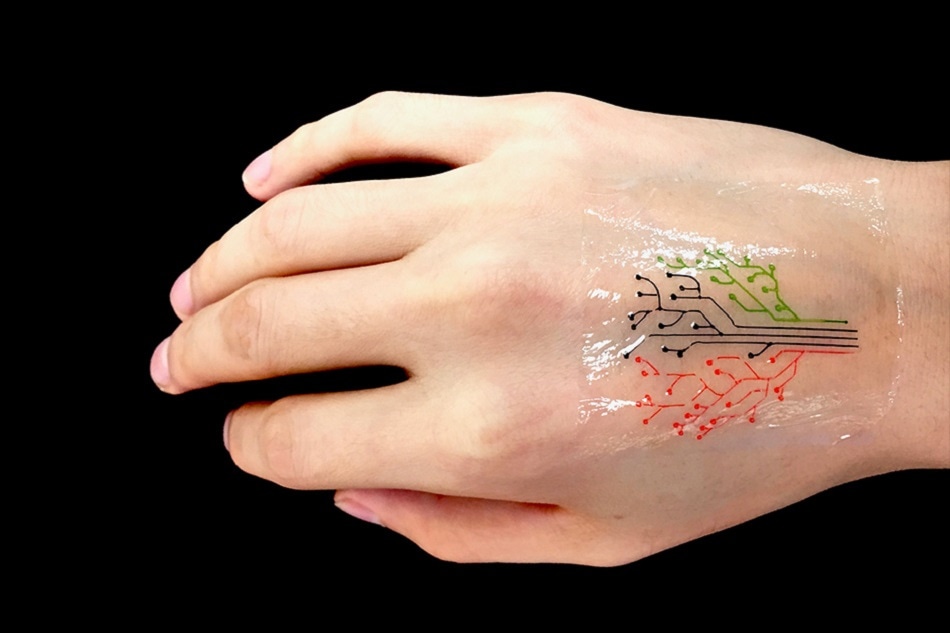 Image Credit: MIT engineers
Image Credit: MIT engineers
Scientists and engineers have been researching various different materials as the base for the inks used in 3D printing for a number of years. Previous successful methods have included those such as using temperature-sensitive polymers and photoactivated structures that change shape in response to light.
Using cells however, is a world first. The results have been published in the journal Advanced Materials.
Researchers Xuanhe Zhao from MIT’s Department of Mechanical Engineering, and Timothy Lu, associate professor of computer science, biological and electrical engineering, have been combining their skills to genetically engineer live cells so that they can be used as responsive materials for 3D-printed inks. When mixed with a solution of hydrogel and nutrients, the cells can be printed, layer by layer, to form three-dimensional structures and devices.
The way the cells work is by responding to a variety of stimuli. Live mammalian cells have shown to give very little success and poor results in the past, with cells dying during the tough printing progress, so the team moved on to using studier bacterial cells.
It turns out those cells were dying during the printing process.
Hyunwoo Yuk, Paper Co-author and Graduate Student
The team also found that the bacterial cells were more compatible with the hydrogels used, as they provided the aqueous environment that is needed to keep the bacteria alive. They carried out screening tests to identify the best hydrogel for the host bacterial cells, discovering that the one that contained pluronic acid was not only compatible, but it also had the ideal consistency for 3-D printing.
You need the ink to flow out of a nozzle like toothpaste, and it can maintain its shape after it’s printed.
Xuanhe Zhao, Professor, Department of Mechanical Engineering, MIT
The ink is printed using a custom 3-D printer that the team built themselves, which combines both elements of a standard printer and parts they had produced. The novel recipe for the 3-D ink that the group created can print at a high resolution of about 30 micrometers per feature. “Each line we print contains only a few cells,” Zhao says. “We can print relatively large-scale structures, measuring several centimeters.”
To demonstrate the ‘living tattoo’ technique, the team printed a tree-shaped pattern onto an elastomer layer that contained the hydrogel and cells. Each branch had cells that were sensitive to different compounds. The patch was then exposed to ultraviolet radiation to solidify it for adhesion to skin. Several chemicals were smeared on to a test subject’s hand before the hydrogel patch was applied, and over several hours, branches of the tree lit up when the bacteria sensed their corresponding chemical stimuli.
The engineers also managed to get the bacteria to communicate with each other by programming them to respond only when they receive certain signals from other cells. To test this, they printed a thin sheet of hydrogel filaments that had signal-producing bacteria and chemicals, overlaid with a layer of filaments containing signal-receiving bacteria. They found the output filaments lit up only when they overlapped and received input signals from corresponding bacteria.
Researchers Xuanhe and Timothy Lu say that their technique could be used to make materials for interactive displays and wearable sensors. The materials can be patterned with live cells that have been engineered to respond to chemicals, pollutants and changes in temperature and pH.
Co-author and graduate student Xinyue Liu explained how they could use bacterial cells like workers in a 3-D factory. “They can be engineered to produce drugs within a 3-D scaffold, and not just confined to epidermal devices. As long as the fabrication method and approach are viable, applications such as implants and ingestibles should be possible.”
Disclaimer: The views expressed here are those of the author expressed in their private capacity and do not necessarily represent the views of AZoM.com Limited T/A AZoNetwork the owner and operator of this website. This disclaimer forms part of the Terms and conditions of use of this website.